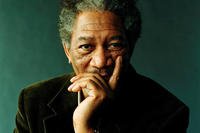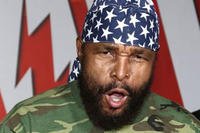Last week, President Donald Trump issued "a little breaking news" during his visit to Fort Bragg, North Carolina, to celebrate the Army's 250th birthday. "We are also going to be restoring the names to Fort Pickett, Fort Hood, Fort Gordon, Fort Rucker, Fort Polk, Fort A.P. Hill and Fort Robert E. Lee," he said. "We won a lot of battles out of those forts. It's no time to change. And I'm superstitious, you know, I like to keep it going, right."
The seven Army installations Trump mentioned are part of an overall group of nine that originally honored Confederate military leaders and had their names recommended for removal by an independent commission directed by Congress. Earlier this decade, their namesakes were replaced with more modern Army heroes who had connections to their respective fort.
This year, Defense Secretary Pete Hegseth ordered Fort Moore (named for Vietnam hero Hal Moore and his wife Julia) changed back to Fort Benning and Fort Liberty returned to Fort Bragg. In June, Military.com broke the news that Hegseth also ordered the Navy to strip the USNS Harvey Milk of its name and is reportedly eyeing several other ships for the same treatment.
Read Next: New Graphic Novel Spotlights Robert Smalls, Who Escaped Slavery on a Stolen Confederate Ship
Here are the stories of the namesakes being scrubbed from seven Army installations:
President Dwight D. Eisenhower (Reverting to Fort Gordon)
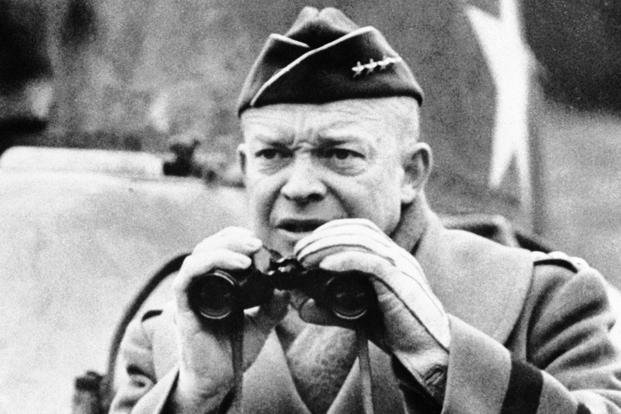
The 34th president of the United States, Dwight D. Eisenhower was also a five-star Army general. Graduating from the U.S. Military Academy at West Point, New York, just before the U.S. entered World War I, he trained tank crews when his request to deploy to Europe was denied.
During WWII, he was the first supreme allied commander of Europe, overseeing the Allied invasions of North Africa, Italy, France (including D-Day) and Germany. After the war, he served as the military governor of occupied Germany before returning to civilian life and becoming the president of Columbia University. Eisenhower was also the first supreme commander of NATO.
Winning the U.S. presidency in 1952, Eisenhower won a second term in 1956. He defeated Adlai Stevenson in both elections in landslides. Eisenhower was a moderate conservative who continued some of former presidents Franklin D. Roosevelt's and Harry Truman's policies. He expanded Social Security and signed and enforced the Civil Rights Act of 1957. Eisenhower oversaw the development of the coast-to-coast interstate highway system, which forever changed transportation, and the development of NASA as a response to Russian technological advances in space.
Eisenhower's granddaughter was in attendance at the base's 2023 renaming ceremony in Georgia and noted her grandfather often returned to the Army post for respite and relaxation. Master Sgt. Louis C. Graziano, a survivor of Omaha Beach on D-Day and a witness to Germany's unconditional surrender to Eisenhower, was also a guest of honor.
Sgt. William Henry Johnson (Reverting to Fort Polk)
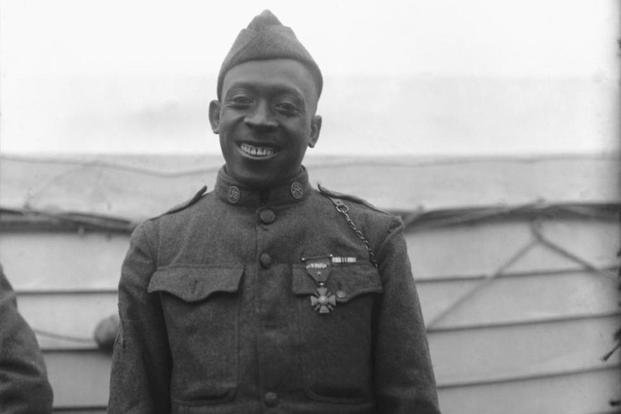
Nicknamed "Black Death" for his fierce fighting prowess, William Henry Johnson was a member of the valiant Harlem Hellfighters, a segregated, all-Black regiment that fought in France during WWI.
While on sentry duty, Johnson and another soldier were ambushed by at least 12 German soldiers. Out of ammunition and armed with only a knife, Johnson engaged in hand-to-hand combat, fighting even after the other soldier was wounded and captured by Germans. During the fracas, he rescued his compatriot, killed and wounded several enemies, and sustained 21 wounds himself. It would take nearly a century for his sacrifice to be recognized with a Medal of Honor.
When later reflecting on his heroics, Johnson said, "There wasn't anything so fine about it. Just fought for my life. A rabbit would have done that."
Along with a fellow soldier, Johnson became one of the first two Americans awarded France's highest award for valor, the Croix de Guerre avec Palme. The attention made him an international hero.
Despite his fame and recognition, Johnson was denied key help from the Army, including disability pay for injuries sustained during service that rendered him unable to return to his pre-war job as a porter. It is likely that he was "shunted" aside after speaking publicly about the discrimination Black soldiers experienced during WWI.
Johnson died young and reportedly destitute. He was buried at Arlington National Cemetery in 1929. He was also posthumously awarded a Purple Heart in 1996 and the Distinguished Service Cross in 2002.
At the renaming ceremony in 2023 in Louisiana, Brig. Gen. David W. Gardner, the commanding general of Fort Johnson, noted, "The 'Home of Heroes' is now named after a soldier who embodies the warrior spirit."
Col. Van T. Barfoot (Reverting to Fort Pickett)
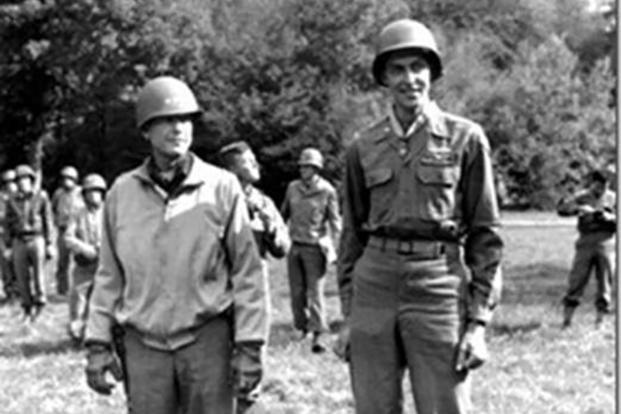
Van T. Barfoot's life was marked by service. As a teenager, Barfoot volunteered for the Civilian Conservation Corps, a program out of the New Deal. Instead of waiting to be drafted, he enlisted in the Army just before the U.S. entered WWII. Just a few years later, he was a veteran of the Salerno and Anzio campaigns and was awarded the Medal of Honor for his "extraordinary heroism, demonstration of magnificent valor, and aggressive determination in the face of point-blank fire."
During an engagement with entrenched Germans in Italy, he single-handedly cleared three machine gun nests, disabled an advancing Mark VI tank with a bazooka, captured 17 enemy combatants, killed and wounded others, and helped two of his seriously wounded compatriots to safety. "I didn't think I'd done anything extraordinary. I felt this is what a soldier's supposed to do. As a leader, I felt I had to protect the people that were with me," Barfoot said decades later in a Library of Congress interview. "I knew I could handle the situation."
When he returned to the United States, he was a hero and an unlikely promoter of civil rights. Barfoot was born and raised in Jim Crow Mississippi. After the war, he desegregated a train's crowded dining car out of necessity, sitting at the same table as a Black soldier, saying, "I've fought with colored men -- why shouldn't I eat with 'em?"
At a meeting with a Mississippi senator who was a known member of the Ku Klux Klan, Barfoot spoke in favor of his Black counterparts: "Mr. Senator, I found out after I did some fightin' in this war [that Black soldiers] fight just as good as the white boys. I have changed my ideas a lot about colored people since I got into this war, and so have a lot of other boys from the South." His statement was run in newspapers across the country.
Barfoot made the Army his career, serving in the Korean War and Vietnam War. He spent the next three decades climbing the ranks. He became a helicopter pilot and was twice an adviser to the Virginia National Guard, among other accomplishments. Over his 34-year career, he earned the Silver Star, Bronze Star, three Purple Hearts, two Legions of Merit and 11 Air Medals.
When Fort Pickett's name was changed to Fort Barfoot in 2023, it was the first time a military installation was named after someone with known Native American lineage. Representatives of the Choctaw Nation of Oklahoma attended, a Choctaw Nation flag was displayed and tribal dances honored Barfoot during the ceremony in Virginia.
Gen. Richard E. Cavazos (Reverting to Fort Hood)

The Army's first four-star Hispanic general and the first Mexican-American brigadier general, Richard E. Cavazos served in the Korean War and Vietnam War. His career spanned 33 years and included many awards, accolades and recognitions, including the Medal of Honor.
The son of a WWI veteran, Cavazos was born in Texas on a cattle ranch and grew up in the Jim Crow South. In spite of the racism and segregation of the time, he enrolled at Texas Tech University and joined the ROTC program his sophomore year of school. After being commissioned, he deployed to Korea with the Borinqueneers, a famed and highly decorated regiment of primarily Puerto Rican soldiers. His ability to speak English and Spanish was a game-changing asset to the regiment's effectiveness. He earned the Silver Star and Distinguished Service Cross. In Vietnam, he was awarded a second Distinguished Service Cross.
Cavazos was known for his leadership and mentorship. Colin Powell credited him with helping him reconsider the Army as his career. A soldier who served under him during the Vietnam War later reflected, "Most battalion commanders stood in the rear or in a helicopter above to direct the battle. ... He fought on the ground with his troops during battle." Said Maj. Gen. Alfred Valenzuela: "He was the guy we wanted to be. If we couldn't be him, we wanted to be near him and serve with him."
In January 2025, Cavazos was posthumously awarded the Medal of Honor for "his gallantry and intrepidity above and beyond the call of duty" in 1953 during the Korean War. The then-first lieutenant led his company on a nighttime raid. He regrouped his men multiple times, leading them back into the fray under heavy mortar and artillery fire. When the company withdrew, he stayed in enemy territory, locating and evacuating five wounded separately. He returned four more times to search for and rescue four other groups of soldiers while sustaining his own wounds.
Cavazos' family released a statement, disagreeing with the Trump administration's decision to revert Fort Cavazos to Fort Hood and defending their patriarch's legacy. They also implored "this administration to focus its efforts in the same direction that Gen. Cavazos would have encouraged: on the men and women of the United States Army, both serving and retired."
Fort Cavazos was the only "mainland American army [sic] base" named after a person of Hispanic descent.
Lt. Gen. Arthur J. Gregg (Reverting to Fort Lee)

Arthur J. Gregg was the first Black brigadier general in the U.S. Army Quartermaster Corps and the first Black lieutenant general in the Army. When he retired in the early 1980s, he was the highest-ranking Black officer in the military at the time.
Gregg enlisted in 1946 at the age of 17, inspired by Black service members who served in WWII, and then attended Officer Candidate School. His first assignment as an officer was to Camp Lee, which would eventually be redesignated in his honor decades later. He spent much of his career in post-war Germany. He also was stationed in Japan and deployed to Vietnam.
"I've had big jobs, but I still look upon the command of that battalion in Vietnam as the most significant point in my career," Gregg once reflected.
During his Army career, Gregg served as director of logistics for the Joint Chiefs of Staff and the deputy chief of staff for logistics in the U.S. Army, among many other roles.
Gregg was present for the naming ceremony in 2023 in Virginia, making him the only person in modern American history alive when honored in such a way. He died in 2024 at the age of 96. His funeral was held in the Fort Gregg-Adams chapel, and he was interred at Arlington National Cemetery.
Gregg's daughter spoke to Military.com after the news of the redesignation broke, saying, "My father worked his entire life trying to move the Army and, as a result, the nation forward, and now we're watching it slip backwards." Her family had not been contacted by the administration prior to Trump's speech at Fort Bragg.
Lt. Gen. Charity Adams Earley (Reverting to Fort Lee)
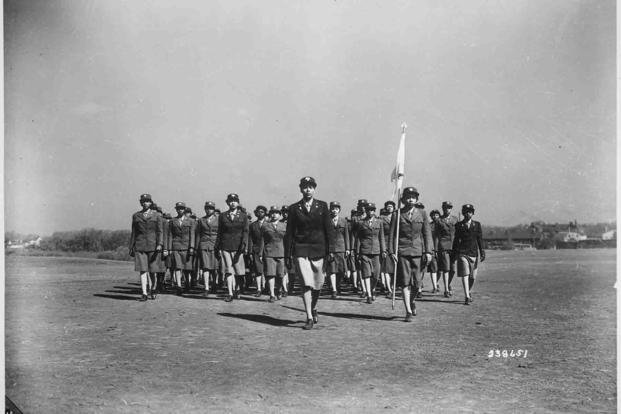
Charity Adams Earley's story is one that has become well-known in only the past few years. Earley joined the Women's Army Auxiliary Corps in 1942 (it was renamed the Women's Army Corps the following year) and was quickly promoted multiple times. In 1944, she was chosen as the commanding officer of the now-storied 6888th Central Postal Directory Battalion, which was also the first Black WAC unit to deploy overseas in WWII.
Tasked with eliminating a colossal postal backlog of military mail based in England in six months, Earley led her team to do it in half the time -- processing 65,000 pieces of mail a day. Earley and the Six-Triple-Eights then were sent to Rouen and Paris, France, to also eliminate the backlogs of military mail in those cities.
Earley was promoted to lieutenant colonel in 1945, the highest rank attainable for any WAC. She left the Army after the war, completing a master's in psychology and working for a time with the Veterans Administration. She spent most of her career working in higher education.
Public interest in the 6888th and Earley's contributions has become a recent phenomenon. The battalion's story was brought to the masses when Tyler Perry turned it into a movie, casting Kerry Washington as Earley in Netflix's "The Six Triple Eight" in 2024.
In late April 2025, House Speaker Mike Johnson awarded the 6888th a Congressional Gold Medal In his remarks, Johnson honored the "incomparable Lt. Col. Charity Adams Earley who guided her unit. She faced all those challenges and she guided her unit with unshakable grace and resolve."
Earley's son spoke to Military.com after the naming announcement, saying, "They just had the Congressional Gold Medal session for the Six Triple Eight, and there were so many positive statements about the unit and my mother and what they did. It's a little bit surprising." His family had not been contacted by the administration before the Fort Bragg announcement.
Dr. Mary Edwards Walker (Reverting to Fort Anderson-Pinn-Hill, in place of Fort A.P. Hill)

Mary Edwards Walker is the only woman awarded the Medal of Honor. The second female doctor to graduate from medical school in American history, she was unable to formally serve as a Union Army surgeon because of her gender. Unwilling to let that stop her, she spent some of the Civil War volunteering and working for free as a civilian surgeon for the Union.
Walker set up a relief organization for families of wounded service members as well as temporary hospitals and field clinics. During the battles of Fredericksburg and Chattanooga, she worked near the front lines. In 1863, she became the first female surgeon in U.S. Army history when the War Department appointed her as a "Contract Acting Assistant Surgeon (civilian)" -- paying her a salary equivalent to that of an Army officer.
Walker frequently crossed into enemy territory to care for wounded soldiers and civilians, regardless of their loyalties. In 1864, she was captured by Confederates on suspicion of spying and held as a POW at Castle Thunder for four months before being exchanged during a prisoner swap. Because she was never formally commissioned, she was not eligible for an Army pension; however, she did receive a federal disability pension for muscle atrophy attributed to her time as a POW.
After the Civil War, Walker left the medical profession, owing to permanent eyesight damage she sustained at Castle Thunder. An ardent supporter of women's rights, Walker testified twice in front of the House of Representatives, urging members to allow women the right to vote. Throughout her life, she eschewed social conventions of the time, pursuing higher education, divorcing her husband and wearing men's clothing, despite harassment and arrest for doing so. As she aged, she became more militant in her beliefs, dropping the bloomer outfit she wore in her younger days for a suit and top hat.
Two years before her death in 1919, she -- along with hundreds of others -- had her Medal of Honor rescinded. Walker refused to give it back, wearing it until she died. In 1977, President Jimmy Carter restored her Medal of Honor.
At the time of its rededication in 2023, Fort Walker in Virginia was the only Army installation named solely for a woman.
Chief Warrant Officer Michael J. Novosel (Reverting to Fort Rucker)

The son of Yugoslavian immigrants, Michael Novosel joined the Army Air Corps nearly a year before the attack on Pearl Harbor as a way to "pay back the U.S. for welcoming his family with open arms." After serving as a flight instructor for the beginning portion of WWII, he was sent to the Pacific and flew missions in a B-29 Superfortress.
The military was deeply ingrained in Novosel's life. He tried being a civilian after WWII but ended up joining the Air Force Reserve a few years later during the Korean War. In the early 1960s, he returned to active duty, leaving the Air Force for the Army so he could fly helicopters with the Green Berets.
In 1969, he piloted a helicopter without cover, saving 29 wounded men in 15 extractions during an intense firefight. During the event, Novosel lost control of the helicopter briefly before recovering it and was also wounded during one particularly daring extraction. He was awarded the Medal of Honor "for conspicuous gallantry and intrepidity in action at the risk of his life above and beyond the call of duty."
Over two tours in Vietnam, Novosel flew 2,543 missions that helped evacuate 5,589 wounded personnel, including his own son. (He and his son were the first father-son duo to serve in the same unit during the Vietnam War.)
After the renaming announcement in Alabama, a relative of Col. Edmund Rucker expressed her dismay in the choice, even though the fort will technically be named for a different Rucker: "Rucker is not that important. My family committed treason. We should not be looking to the past. ... As a Rucker, I am just appalled. ... Novosel was a hero, and that's who it should be named after."
Related: Hegseth Wants to Rename 8 Naval Ships. Here Are the Stories Behind Their Namesakes
Want to Know More About the Military?
Be sure to get the latest news about the U.S. military, as well as critical info about how to join and all the benefits of service. Subscribe to Military.com and receive customized updates delivered straight to your inbox.












